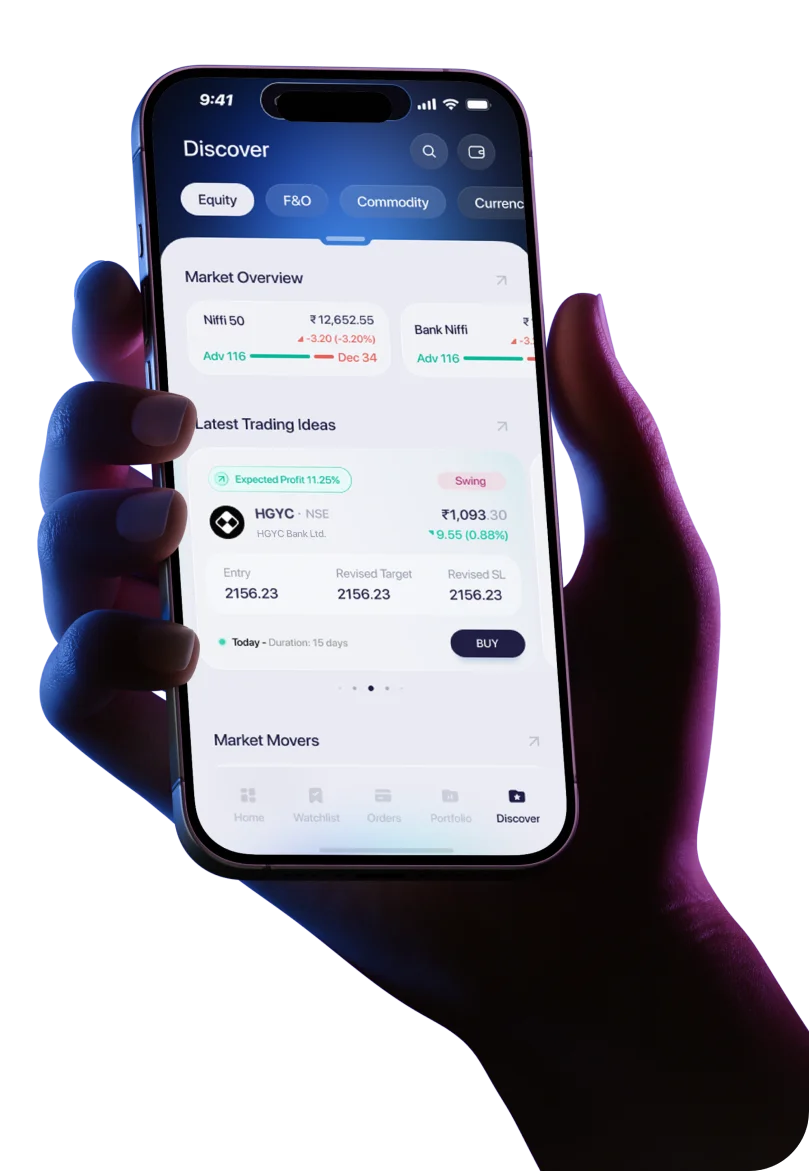Introduction
In the world of trading, margin serves as a crucial component that allows traders to take larger positions than their available capital would normally permit. By depositing a fraction of the trade value as collateral, traders can amplify their exposure and potentially enhance returns. However, while leverage can magnify profits, it can also amplify losses if not managed carefully. That’s where a margin calculator becomes an indispensable tool.
A margin calculator helps traders estimate the exact margin requirement before initiating a position in equities, futures, or options. It enables them to plan trades efficiently, avoid margin shortfalls, and manage their risk exposure in line with regulatory norms set by the NSE and SEBI. Accurate margin estimation ensures that traders maintain adequate funds in their account to meet obligations, thereby reducing the risk of penalties, forced square-offs, and unnecessary stress in volatile markets.
Understanding Margin and Its Components
In trading, margin represents the amount of money that traders must deposit with their broker to open and maintain a leveraged position. Margins are designed to protect both traders and brokers from potential losses arising from adverse market movements. Understanding the components of margin is essential to grasp how the system ensures financial stability.
- SPAN Margin
The SPAN (Standard Portfolio Analysis of Risk) margin is the base margin calculated using sophisticated risk models developed by the exchange. It evaluates the overall portfolio risk by considering multiple parameters such as volatility, price movements, and time to expiry. The SPAN margin ensures that traders have sufficient collateral to withstand potential losses across their portfolio positions.
- Exposure Margin
The Exposure Margin, also known as an Additional Margin, is levied over and above the SPAN margin. It accounts for risks not covered under the SPAN model, such as sudden spikes in volatility or unexpected market events. The exposure margin percentage may vary across instruments and segments, generally ranging from 3% to 5% of the notional value in equity derivatives.
- Initial Margin
The Initial Margin refers to the minimum upfront capital required to open a position. It is the total of SPAN and Exposure margins and acts as the first line of defense against potential market losses.
- Maintenance Margin
The Maintenance Margin is the minimum amount that must remain in the trading account to keep positions open. If funds fall below this level, a margin call is triggered, prompting the trader to add funds or risk position liquidation.
Together, these margins play a critical role in risk mitigation, ensuring that traders and brokers remain protected from excessive losses during volatile market conditions.
The Role of Margin Calculators in Risk Management
Managing margin requirements can be challenging, especially with multiple instruments, changing volatility, and exchange updates. A margin calculator simplifies this process by providing real-time, accurate estimates of margin requirements before placing trades.
A margin calculator helps traders determine how much capital they need to initiate a position in derivatives like Nifty futures, Bank Nifty options, or stock futures. By entering trade parameters such as contract type, lot size, strike price, and expiry date, traders can instantly know the SPAN and Exposure margins applicable.
This tool plays a vital role in avoiding margin shortfalls, which occur when available funds are lower than the required margin. Shortfalls can result in penalties or forced position closures. By pre-calculating requirements, traders can plan capital allocation efficiently, ensuring adequate liquidity to withstand market swings.
Another advantage is the ability to simulate what-if scenarios. Traders can assess how changing position size or volatility impacts margin needs. This helps in adjusting strategies dynamically to maintain healthy leverage ratios.
In short, a margin calculator acts as a risk management assistant, helping traders make informed decisions, comply with exchange regulations, and maintain financial discipline. Whether you’re a retail trader or a professional, integrating a margin calculator into your trading routine reduces uncertainty and promotes consistency in managing leveraged positions.
Consequences of Margin Shortfalls and Penalties
A margin shortfall occurs when the funds available in a trader’s account are less than the margin required to maintain open positions. Such shortfalls are taken seriously by exchanges and brokers because they expose the system to counterparty risk.
In India, SEBI has implemented a strict penalty framework for margin shortfalls to promote market discipline and prevent systemic risks. The penalties depend on the severity and frequency of the shortfall:
- Small Shortfall: If the shortfall is below ₹1 lakh or less than 10% of the required margin, a 0.5% penalty is levied on the shortfall amount.
- Large Shortfall: If the shortfall is ₹1 lakh or more, or 10% or more of the required margin, the penalty increases to 1% of the shortfall.
- Continued Shortfall: If the shortfall continues for more than three consecutive days, the penalty escalates to 5% per day until resolved.
- Repeated Shortfalls: If a trader faces more than five instances of shortfall within a month, a 5% penalty applies for each additional occurrence.
These penalties can substantially erode trading profits. Moreover, persistent shortfalls can lead to forced liquidation of positions or even suspension of trading privileges.
Using a margin calculator eliminates guesswork, helping traders anticipate and maintain the necessary margin levels. By ensuring adequate funding, traders not only avoid financial penalties but also preserve capital for strategic opportunities during volatile periods.
How to Use a Margin Calculator Effectively
A margin calculator is a straightforward yet powerful tool that empowers traders to plan and manage positions efficiently. Here’s how to use it effectively:
Step 1: Select the Instrument
Begin by selecting the type of instrument, Equity, Futures, or Options, from the margin calculator interface. For example, a trader may choose the Nifty Futures contract or a specific stock futures contract such as Reliance Industries.
Step 2: Enter Trade Details
Input details like quantity, strike price, expiry date, and position type (buy/sell). The margin calculator uses these inputs to assess the total notional value and applicable margin percentage.
Step 3: Calculate the Required Margin
Once all inputs are entered, click on Calculate Margin. The calculator will display a detailed breakdown showing SPAN Margin, Exposure Margin, and the Total Initial Margin required to place the trade.
Step 4: Interpret the Results
Traders can use the result to verify if sufficient funds are available in their trading account. For instance, if the calculator shows a total margin requirement of ₹1,20,000, the trader must maintain at least that much to initiate the position.
Step 5: Optimize Margin Usage
Experienced traders use the margin calculator to explore different trade sizes and expiration dates to identify the most capital-efficient strategy. Avoiding over-leveraging is key, maintaining a margin buffer of at least 10–15% can protect against sudden volatility or price gaps.
In short, a margin calculator enables strategic decision-making, ensuring that each trade aligns with both financial capacity and risk appetite.
Best Practices for Managing Margins
Effective margin management is the cornerstone of sustainable trading. Below are some best practices every trader should follow:
- Maintain a Buffer: Always keep additional funds, typically 10–20% more than the required margin, to cushion against sudden market fluctuations.
- Monitor Margin Levels Regularly: During high volatility or event-driven sessions (like Budget Day or Fed announcements), margin requirements can change abruptly. Keep a close eye on your margin status.
- Simulate Scenarios Using Margin Calculators: Before taking a large position, use the margin calculator to test different position sizes and understand how volatility impacts your capital requirement.
- Stay Updated on Exchange Announcements: Exchanges like NSE and BSE periodically revise margin norms. Staying informed helps avoid unexpected shortfalls.
- Avoid Over-Leveraging: Leverage amplifies both gains and losses. Limit your exposure to a manageable level aligned with your risk tolerance and trading capital.
By following these practices and regularly using a margin calculator, traders can maintain consistent control over their positions and reduce the risk of forced liquidations or penalties.
Real-Life Example: Calculating Margin for a Futures Trade
Let’s take a practical example using Nifty Futures to understand how a margin calculator works in real trading conditions.
Suppose a trader wants to buy one lot of Nifty Futures. As of October 2025, assume:
- Nifty Futures Price: ₹25,000
- Lot Size: 75 units
- Contract Value: ₹25,000 × 75 = ₹18,75,000
Using an online SPAN Margin Calculator, we input the details. The calculator shows:
- SPAN Margin: ₹85,000
- Exposure Margin: ₹45,000
- Total Margin Requirement: ₹1,30,000 approximately.
This means the trader needs ₹1.3 lakh as the initial margin to take one lot of Nifty Futures. If the trader’s available balance falls below this during the trade, a margin call will be triggered.
If volatility rises sharply, the margin calculator will reflect an increased requirement, say ₹1.45 lakh, due to higher risk. Such real-time updates allow traders to stay compliant and avoid shortfall penalties.
This example illustrates how accurate margin calculation not only ensures regulatory compliance but also protects traders from unexpected fund shortages during fast market movements.
Conclusion
Margins are a fundamental part of trading in leveraged markets like futures and options. They act as both a safeguard and a gateway to greater trading opportunities. However, managing margins efficiently is vital to prevent unnecessary penalties and forced position closures.
A margin calculator empowers traders by providing real-time, precise margin requirements, allowing them to allocate capital prudently and manage risk effectively. By understanding how SPAN, Exposure, and Initial Margins work together, traders can make informed decisions that align with their trading goals.
In the dynamic world of Indian markets, leveraging a margin calculator is not just a convenience — it’s a necessity for every trader aiming to build consistency, discipline, and long-term profitability.




 Easy & quick
Easy & quick
Leave A Comment?